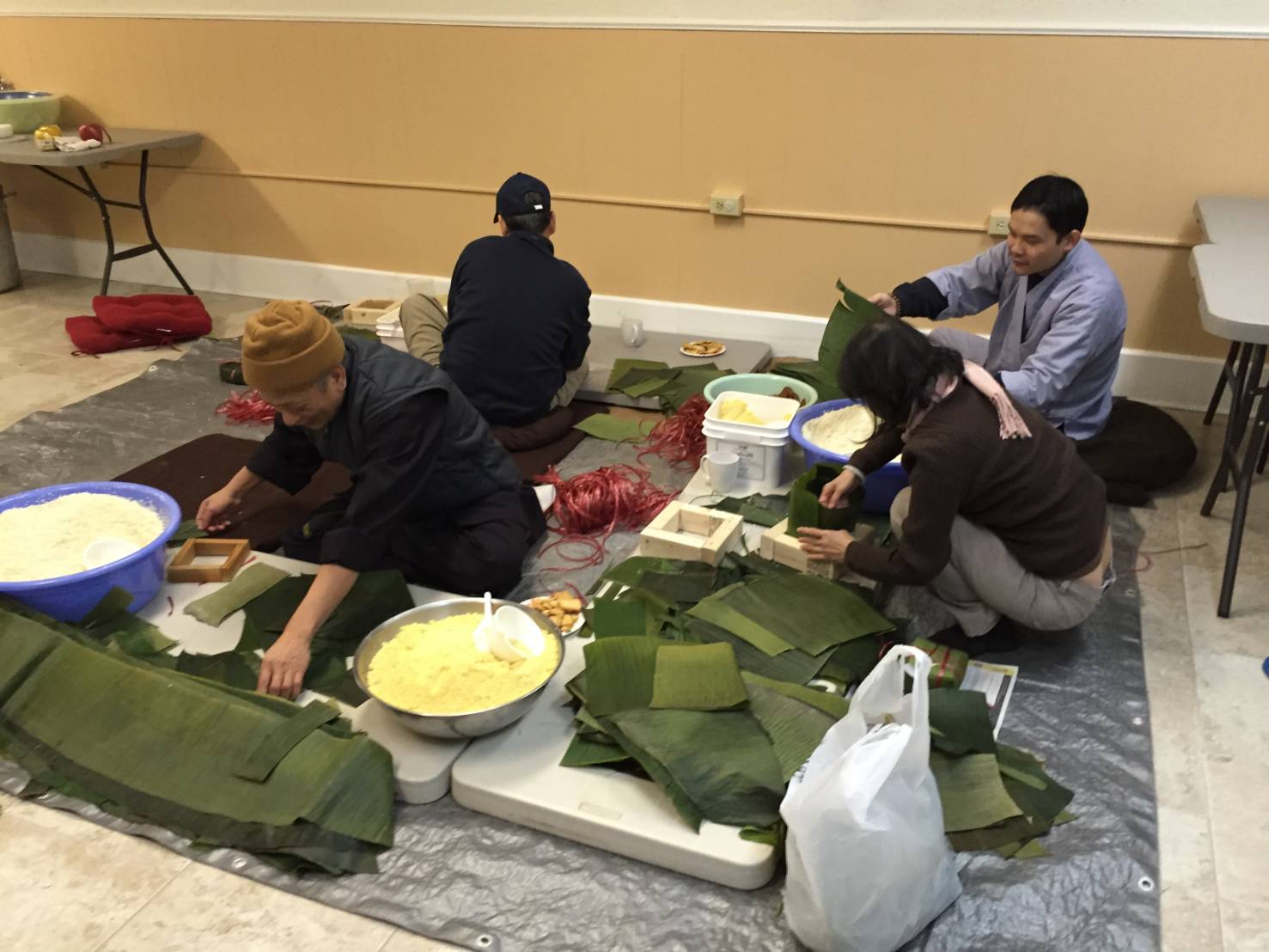Reflections On Lunar New Year
Text | Linh Le
Lunar New Year has always been a cherished time for me, deeply tied to tradition, family, and cultural heritage. My earliest memories of the celebration come from Vietnam, where the holiday was marked by rich customs, delicious food, and meaningful rituals. Every year, our family and the local Buddhist community gathered to prepare for the festivities, with food playing a central role in our celebrations. One of the most significant dishes we made was "bánh chưng," a square sticky rice cake that is a staple of Vietnamese Lunar New Year. We made a vegetarian version, using mung beans and sticky rice, carefully wrapped in green banana leaves. The process of preparing and boiling the cakes—sometimes for up to twelve hours—was an act of patience and togetherness. As we waited for them to cook, we made other treats like nut brittle, a traditional Vietnamese candy that added sweetness to our gatherings.

Beyond food, the spiritual aspects of the celebration were just as important. On the first day of the Lunar New Year, we gathered at the temple for a chanting session, reinforcing the values of renewal, gratitude, and connection to our Buddhist practice. These moments were deeply moving and made the New Year feel truly auspicious.
When I moved to the United States, our Lunar New Year celebrations took on a different form. In Virginia, the Vietnamese Buddhist community came together at the local temple to keep our traditions alive, though on a smaller scale. Without an official holiday break, our gatherings were limited, yet they remained special. We prepared traditional foods, just as we did in Vietnam, and engaged in chanting ceremonies that brought a sense of continuity despite being far from home. The experience of celebrating in the U.S. reminded me of the resilience of cultural traditions and how important it is to preserve them, even in new environments.
.jpg)
This year, I had the opportunity to spend Lunar New Year at Fo Guang Shan in Taiwan, and it was an experience I will never forget. The scale and depth of the celebrations were unlike anything I had ever seen before. Having helped with New Year decorations in the past, I was familiar with the effort involved, but at Fo Guang Shan, the level of planning and teamwork was on a completely different scale. Every lantern, every detail, was infused with meaning. The lanterns, in particular, stood out to me—not just as decorations, but as symbols of hope and aspiration. At night, they glowed warmly, creating a beacon for the New Year and reminding me that even small contributions can be part of something much greater.
One of the most moving experiences I had was working at the Bell Tower, where visitors rang the large bell and made wishes for the New Year. The resonance of the bell seemed to clear away the past and open the door to new possibilities. Watching people from different backgrounds take part in this ritual was a humbling experience, reinforcing how shared traditions can transcend cultural boundaries.
.jpg)
The diversity of visitors at Fo Guang Shan added another dimension to the celebration. Many Vietnamese visitors, along with people from various countries, came to take part in the festivities. Seeing the common themes of renewal, family, and hope reflected across different cultures made me realize how interconnected we all are through our traditions.
Reflecting on my journey—from celebrating in Vietnam, to adapting traditions in the U.S., to experiencing Lunar New Year on a grand scale in Taiwan—I see how each experience has shaped my understanding of cultural heritage. No matter where I am, the essence of the New Year remains the same: a time for renewal, gratitude, and connection. My time at Fo Guang Shan has deepened my appreciation for the effort and meaning behind these celebrations, and it is an experience I will carry with me always.
About the author: Linh Le is a first-year Master's student in Buddhist Studies at Fo Guang University in Yilan, Taiwan, and is from the United States.